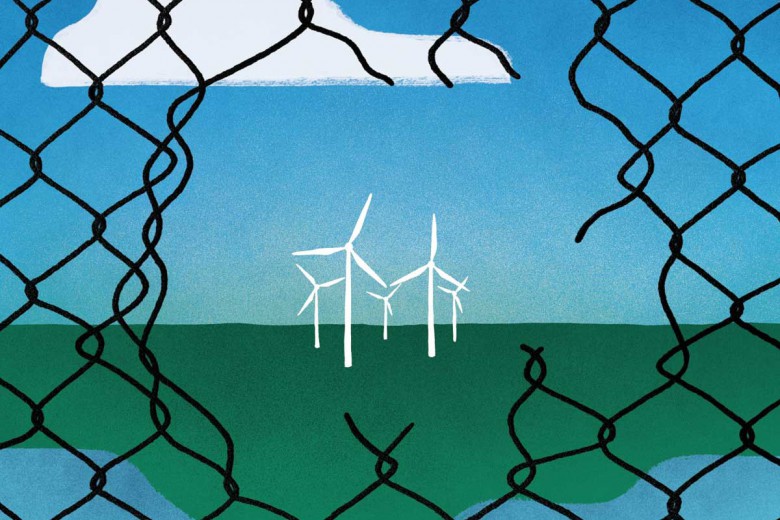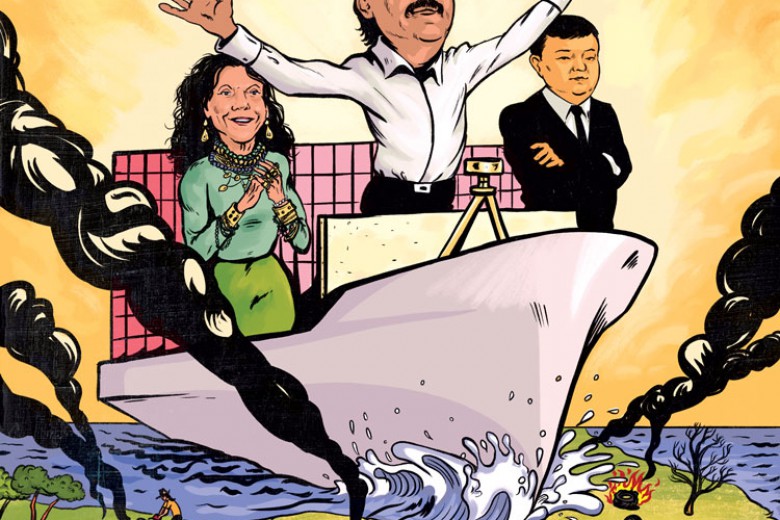In recent years, progressive commentators have bemoaned the extent to which skyrocketing commodity prices locked Canada’s economy into the environmentally and economically unsustainable extraction of non-renewable resources. Rising commodity prices drove up energy costs and the U.S. exchange rate, to the detriment of Canada’s manufacturing and tradable services sectors. Certainly, the recent crash of commodity prices underscores the value of developing a more diverse mix of industries, but commodity prices remain high by historical standards: the Bank of Canada’s Commodity Price Index was at the same level in October 2008 as its annual average for 2007. Since most commodities are Crown-owned, relatively high prices provide an opportunity to raise the revenues needed to finance the public programs advocated by progressives. In particular, collecting appropriate revenues from the depletion of non-renewable resources could finance the investments in conservation and renewable energy needed to build an environmentally sustainable society.
Saskatchewan’s recent experience illustrates both the perils of a resource-driven economic boom and the opportunities to collect more public revenue from resources. High resource prices have expanded the province’s economy above the national average, but have left the incomes of Saskatchewan people below the national average. A major challenge for the province is to translate its economic prosperity into higher living standards for provincial residents. Higher resource royalties would give the people of Saskatchewan a better return on the depletion of their non-renewable resources.
Squandering the windfall
By historical standards, the prices of Saskatchewan’s major resources remain high. Oil is still worth far more than $20 per barrel, a price at which the petroleum industry prospered for years. Last year, when the price of oil averaged $70 per barrel, the industry reaped record profits.
The price of potash does not appear to have declined at all. A few years ago, it was below $100 per tonne. The Potash Corporation of Saskatchewan sold potash for an average of $590 per ton in the third quarter of 2008. The Vancouver spot price reached $865 per ton even amid the market meltdown in October. Canpotex, Canada’s offshore potash marketing agency, recently negotiated an average price of $900 per ton for shipments to Japan during the first half of 2009. Since oil and potash prices are denominated in U.S. dollars, the lower exchange rate makes them higher in Canadian dollars.
Due to higher resource prices, gross domestic product (GDP) per person has been higher in Saskatchewan than in Canada as a whole since 2004. Despite this apparent prosperity, personal incomes remain lower in Saskatchewan than in other provinces. In 2007, Saskatchewan’s GDP per person was 10 per cent above the national average ($51,327 vs. $46,441). However, Saskatchewan’s personal income per person was 10 per cent below the national average ($31,658 vs. $35,221).
A possible explanation for Saskatchewan’s lower personal incomes is that a smaller proportion of the population is of working age. However, the province also falls behind in comparisons of employed workers. The last census measured median incomes of full-time, full-year workers in 2005. Saskatchewan ranked third-lowest among the 10 provinces. Statistics Canada’s Labour Force Survey indicates that, in October 2008, the average hourly wage was $21.64 nationally and $20.88 in Saskatchewan.
Of course, living standards depend not only on personal income but also on the availability of public services. In the 2007/08 fiscal year, Saskatchewan’s provincial government expenditures per person barely exceeded the national average ($8,462 vs. $8,265). Despite the importance of provincial public services, it seems unlikely that the additional $197 in Saskatchewan compensates for the $3,563 gap in personal income. Although Saskatchewan has 10 per cent more GDP per person than all provinces combined, it has only two per cent more provincial spending.
Clearly, most of the resource-driven economic expansion has gone somewhere other than employment income or the provincial treasury. From 2002 (when resource prices began increasing) through 2007, total employment earnings rose from $14.6 billion to $19.6 billion. At the same time, total corporate profits rose from $4.8 billion to $12.5 billion. The provincial government’s own-source revenues, which largely consist of taxes on employment earnings and corporate profits, rose from $5.7 billion to $8.2 billion between the 2002/03 and 2007/08 fiscal years.
In other words, over five years, employment earnings rose by 34 per cent, government revenues increased by 44 per cent and corporate profits jumped by 160 per cent. In absolute terms, the increase in corporate profits ($7.7 billion) exceeds the combined increases in employment earnings ($5.0 billion) and provincial revenues ($2.5 billion).
Sharing the wealth
One way of redressing this imbalance is through collective bargaining. Unions representing workers in resource industries can and should negotiate higher wages and better benefits. For example, members of the United Steelworkers employed by the Potash Corporation of Saskatchewan (PCS) went on strike in August 2008 after having worked for three months without a collective agreement.
In 2007, the top five PCS executives paid themselves compensation equal to the combined wages of these 450 miners. The CEO alone had accumulated stock options worth $730 million when the company’s share price peaked in June 2008. These options are still worth hundreds of millions.
Collective bargaining is critically important in reducing such inequities. However, only four per cent of Saskatchewan workers are employed in mining or oil and gas extraction. Even if all of these workers were organized into unions, collective bargaining could only be part of the solution.
Another approach focuses on Saskatchewan people not only as workers who extract resources, but also as the owners of those resources. The provincial government charges royalties to the companies that extract Saskatchewan’s Crown-owned resources. Higher resource royalties would help to translate higher resource prices into a higher standard of living for the people of Saskatchewan.
The additional revenues could be distributed directly to provincial residents or invested in public services and infrastructure from which residents benefit. In particular, such investment could be focused on offsetting the ecological damage caused by resource extraction.
Giving it away
Unfortunately, the provincial government has been moving in the opposite direction since the 1980s. It has slashed royalty rates in an effort to accelerate resource extraction. In some cases, it gave resources away for free. For example, in 2002, the government of Saskatchewan announced a 10-year royalty holiday for new gold and base metal mines. In other words, it decided to give away the province’s gold reserves in exchange for the economic activity associated with digging them out of the ground.
The results have been predictable. In 2007, the provincial government collected $1.8 billion of royalties, only 13 per cent of the $14.4 billion in non-renewable resources sold from Saskatchewan. To estimate how much room exists to increase royalties, one must examine particular resources. Some 80 per cent of Saskatchewan’s resource sales and more than 80 per cent of its royalties come from crude oil and potash. Therefore, those two commodities tell most of the story.
Saskatchewan’s royalties are calculated as percentages of the value of each oil well’s output. The percentage depends on the price of oil and on when the well was drilled. In response to skyrocketing oil prices in 1974, the provincial government made a distinction between old and new oil wells. Because “old” wells had been viable at previously low oil prices, they paid high royalties on the windfall profits arising from high prices. Because “new” wells might be economical only given higher prices, they paid somewhat lower royalties than “old” wells.
The Conservative government of the 1980s reduced royalty rates and provided royalty holidays for newly drilled wells. In 1994, the NDP government classified future wells as “third tier” wells that would be subject to lower royalties than “new” wells. In 2002, it designated a fourth tier of wells that would be subject to even lower royalty rates and more generous provincial incentives. As of 2005, “enhanced oil recovery” projects pay a royalty of only one per cent until their capital costs are fully paid off.
While the initial distinction between old and new wells was used to collect higher royalties on existing wells, subsequent chronological distinctions have sharply reduced royalty rates over time. From the 1970s through 2007, Saskatchewan’s royalties fell from 50 per cent to 15 per cent of the total value of provincial oil production.
By contrast, many foreign countries – including the United Kingdom, Ecuador, Nigeria, Venezuela, Kazakhstan and Algeria – have substantially increased fossil-fuel royalties in the last five years. Alaska Governor Sarah Palin significantly raised state oil royalties in 2007. In most jurisdictions, even right-wing politicians recognized that skyrocketing oil prices were creating windfall profits on oil already being pumped from existing wells.
In 2001 and 2007, Saskatchewan produced exactly the same volume of oil: 24.8 million cubic metres. (Although oil is frequently measured in barrels and American dollars, Saskatchewan government documents refer to cubic metres and Canadian dollars.) But the average price increased from $149 to $334 per cubic metre, driving the value of sales from $3.7 billion to $8.3 billion. Therefore, Saskatchewan’s petroleum industry received $4.6 billion of extra revenue due entirely to price increases as opposed to production increases.
By right, the provincial government should have been able to collect all of this extra revenue in addition to historical royalties. In reality, a more achievable goal might have been to collect three-quarters of the extra revenue: $3.4 billion. In 2001, provincial royalties were $0.5 billion. At 2007 prices, the government of Saskatchewan should have been able to collect oil royalties of $3.9 billion. In fact, it collected only $1.2 billion.
To put the $2.7 billion that was not collected in perspective, the personal income tax cuts announced by the provincial government in October 2008 will cost $0.3 billion annually. In other words, the tax break being given to oil companies through low royalty rates is about nine times larger than what the provincial government describes as “the largest single-year income tax reduction in Saskatchewan history.”
Saskatchewan’s potash royalties consist of a base payment and a profit tax on each tonne sold, but the provincial government waives the profit tax on tonnage in excess of the average sold during 2001 and 2002. Sales have exceeded this average in every subsequent year. Even base payments are not required on potash from mine expansions since 2005.
In calculating profit taxes, potash companies may deduct 120 per cent of capital investment beyond the low point reached in 2002. In other words, the provincial government lets companies immediately write off more than the total cost of their long-term investments. As a result, Saskatchewan’s royalties came in at only 11 per cent of the value of potash production in 2007.
While the industry typically refers to tonnes of potassium chloride (KCl) and American dollars, the provincial government measures tonnes of potassium oxide (K2O) and Canadian dollars. The price of a tonne of K2O rose from around $200 before 2004 to an average of $320 in 2007. Since Saskatchewan produced more than 10 million tonnes of K2O in 2007, this price increase created extra revenue of $1.2 billion for potash companies.
Adding three-quarters of this amount ($0.9 billion) to historical potash royalties ($0.2 billion) suggests that the government of Saskatchewan should have been able to collect $1.1 billion in 2007. It actually collected only $0.3 billion. An estimate of $0.8 billion annually in uncollected potash royalties would be extremely conservative at today’s potash prices, which far exceed the 2007 average.
Countering the objections
Three main arguments are often invoked against raising royalties. First, low royalties are allegedly needed to increase production. In fact, as noted above, Saskatchewan produced the same volume of oil in 2007 as it had in 2001 despite huge price increases and minimal royalties. It appears that the petroleum industry was already operating at full capacity in Saskatchewan before recent royalty reductions.
Meanwhile, the Potash Corporation of Saskatchewan continues to operate below full capacity. As the world’s dominant potash producer, the company is able to limit supply to drive up price. Mine expansions are motivated by increased global demand. Therefore, it is doubtful that lower royalties have increased resource production.
In any case, increased production may not be desirable because it entails faster depletion of non-renewable resources. More oil production also entails more greenhouse-gas emissions. An excessive increase in potash output could reduce prices. In the 1960s, the government of Saskatchewan promised low royalties as an incentive for companies to establish new potash mines. The industry overexpanded, depressing prices and prompting government restrictions on the volume of potash production.
A second common argument is that raising royalties would drive resource companies from Saskatchewan to other jurisdictions. The most recent Statistics Canada figures on the conventional oil and gas industry are for 2005. As a share of marketable production, royalties and land sales were 22 per cent in Alberta and 18 per cent in Saskatchewan.
The government of Alberta has announced significantly higher royalties that will take effect in 2009. Simply matching Alberta’s royalty rates would be a boon to Saskatchewan’s treasury. Indeed, provincial governments should coordinate to ensure that they all collect maximum royalties, rather than competing in a race to the bottom.
But even if other jurisdictions undercut Saskatchewan’s royalties, there are few realistic opportunities for conventional oil producers to relocate. It would be extremely difficult to shift to Alberta or the United States because both are running out of conventional oil. The oil sands and offshore oil require completely different equipment and expertise than is employed in Saskatchewan’s conventional oil fields.
Potash companies cannot leave Saskatchewan because it possesses one-third of the world’s potash production capacity. As PCS itself notes, establishing new mines elsewhere would be hugely expensive and would take years. The potash industry also requires extensive railway capacity that does not exist at all potential mine sites.
A third contention is that whatever the government of Saskatchewan gains through higher royalties would be lost through a correspondingly smaller equalization transfer from the federal government. This point is no longer relevant since Saskatchewan is now a “have” province that does not receive equalization. In other words, there is no equalization entitlement from which to subtract. In any case, the equalization formula includes 50 per cent of natural resource revenues. Therefore, a given increase in royalty revenue could reduce a “have not” province’s equalization entitlement by only half as much.
Saskatchewan’s recent resource boom has not “trickled down” to provincial residents. By increasing resource royalties to appropriate levels, the provincial government could collect substantially more revenue and ensure that the people of Saskatchewan reap the benefits of higher resource prices. The usual arguments against raising royalties are not compelling. By failing to collect and invest appropriate royalties, the government of Saskatchewan is shortchanging both current residents and future generations, who may inherit nothing but the environmental consequences of resource extraction.
Erin Weir is an economist with the United Steelworkers union.





